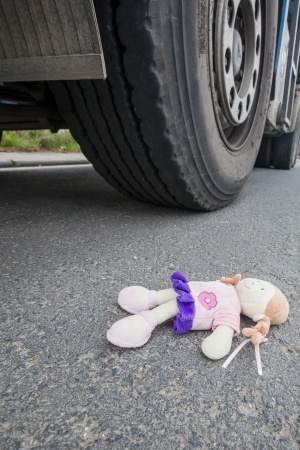Over the years we have met with families who witnessed horrific injuries and even death to family members, causing long-term emotional and psychological damage. In Indiana, until the 1990’s those people went uncompensated despite the tragic damage caused to them. This article will attempt to review what was in the past and what is now required to make such a claim in Indiana and in surrounding states.
Brief History of Negligent Infliction of Emotional Distress (NIED)
Historically, family members who witnessed loved ones being severely injured or killed were not able to make a claim for the emotional damage they endured as a result of witnessing the accident or seeing the result of the accident soon after it had occurred. Courts were hesitant to allow claims for emotional injuries because they believed it would result in faulty claims and because emotional injury was nearly impossible to prove. However, courts eventually began to recognize claims for emotional injuries due to the increase in recognized scientific research proving the effects of experiencing traumatic experiences. This led to what is now referred to as Negligent Infliction of Emotional Distress (NIED).
Indiana’s NIED History
Until 1991, Indiana followed the “Impact Rule” in deciding these cases.1 The impact rule stated that a plaintiff could only recover for emotional damages if all three elements were met2:
(1) An impact on the plaintiff;
(2) Which caused physical injury to the plaintiff;
(3) Which physical injury, in turn, caused the emotional distress
Under this rule the plaintiff had to sustain a physical injury, which resulted in the emotional injury or harm. In 1991, however, Indiana adopted what has become known as the “Modified Impact Rule”3 which has been expanded over time and in 2000 Indiana also adopted the “Bystander Rule,”4 both of which will be explained in this article.
Current Indiana NIED Law
Currently in Indiana there are two accepted theories of NIED. The first of these is the “Modified Impact Rule”, which is seemingly an expansion of the “Impact Rule”. The other theory is the “Bystander Rule” which was adopted in the Groves case in order to allow for NIED claims where the plaintiff had not had been physically impacted, but had been affected by the accident they either witnessed happen or shortly after witnessed the aftermath.5 These theories, and what is required to make a claim under them is explained below.
I. The “Modified Impact Rule”
Originally the “Modified Impact Rule” required that, “a plaintiff sustains a direct impact by the negligence of another and, by virtue of that direct involvement sustains emotional trauma which is serious in nature and of a kind and extent normally expected to occur in a reasonable person . . . without regard to whether the emotional trauma arises out of or accompanies any physical injury to the plaintiff.”6 This made it possible to claim NIED even though the injuries that caused the emotional distress were not sustained by the plaintiff. Later the requirement of “direct impact” was relaxed and interpreted to mean that the plaintiff had some “direct involvement” in the incident giving rise to the emotional injury. The court has also elaborated further and said it does not matter how the physical impact occurs, so long as it results from the defendant’s active involvement in the negligent conduct.7
One of the best examples of the “Modified Impact Rule” is a case where the plaintiff, Ms. Wood, was walking with her friend and the two started across a crosswalk after being given the walk sign, her friend was hit by a truck.8 Plaintiff was not hit by the truck, but began striking the back of the truck after it started to role backward, stopping just before it ran over her friend again. 9 The court in this case held that Wood’s beating on the back of the truck was sufficient to meet the physical impact requirement of the “Modified Impact Rule”. The Court held for Wood.10 This case also illustrates that the person who is injured does not have to be a family member of the person claiming NIED under the “Modified Impact Rule”.11 It should be noted that the “Modified Impact Rule” is an expansion of the “Impact Rule”, so a plaintiff may still claim NIED resulting from an injury to themselves, the “Modified Impact” rule simply expands this to include NIED claims being involved in injuries to others.
 II. The “Bystander Rule”
II. The “Bystander Rule”
The “Bystander Rule” was adopted by Indiana in 2000 in Groves.12 The “Bystander Rule” is an exception to Direct Impact/Involvement requirement of the “Modified Impact Rule”. This new rule made it so that even if the Direct Impact/Involvement element of the “Modified Impact Rule” was not met due to the plaintiff having no physical involvement in the accident, they could still claim NIED in certain circumstances. The court stated in this case that, “where the direct impact test is not met, a bystander may nevertheless establish direct involvement by proving that the plaintiff actually witnessed or came on the scene soon after the death or severe injury of a loved one with a relationship to the plaintiff analogous to a spouse, parent, child, grandparent, grandchild, or sibling caused by the defendant’s negligent or otherwise tortuous conduct.”13
III. Recap of Indiana NIED Law
To recap and simplify what is required to make a successful claim for NIED in Indiana there are two options, the “Modified Impact Rule” and the “Bystander Rule”. The requirements to make a claim under the “Modified Impact Rule” are:
- Plaintiff must sustain a direct impact by the negligence of another person
- By virtue of that direct involvement plaintiff must sustain extreme emotional trauma
Under this rule the plaintiff’s emotional distress can be caused by an injury to the plaintiff or an injury to someone else so long as the plaintiff was physically impacted or involved in the accident. If the plaintiff was not physically impacted or involved in the accident in any way then they would need to claim NIED based on the “Bystander Rule”, which serves as a substitute for the direct impact requirement of the “Modified Impact Rule”. The requirement to make a claim under the “Bystander Rule” are:
- A fatal or serious injury occurred due to the negligence of another person
- The injury must be to a loved one, more specifically someone with relationship to plaintiff analogous to, “a spouse, parent, child, grandparent, grandchild, or sibling”
- The plaintiff must have either actually witness the accident or come to the scene very soon after it occurred.
So to make things maybe even simpler, the “Modified Impact Rule” requires physical impact, but not injury. The “Bystander Rule” does not require injury or impact, but it does have to be shown that there is a close or familial relationship between the plaintiff and the injured party.
NIED Law in Surrounding States
Throughout the country there are different standards for NIED cases. This next section will address, in short, the requirements for NIED cases in the states surrounding Indiana. These states will include Illinois, Kentucky, and Ohio.
In Illinois they have two different test, which are somewhat similar to the Indiana tests. The first, applies to direct victims and is the “Impact Test” (very similar to Indiana’s “Modified Impact Test”). The Second is the “Zone of Danger Test” which is Illinois version of the “Bystander Test”, but it is quite different from the Indiana “Bystander Test”.14 The Impact test requires that the plaintiff be injured or impacted by the accident and that an extreme emotional distress was caused, it should be noted that the emotional distress does not have to cause a physical reaction.15 The “Zone of Danger Test” requires:
1) That the plaintiff be in the zone of danger, meaning in close proximity to the accident.
2) That because of defendant’s negligence plaintiff had reasonable fear for their own safety which caused the emotional distress.
3) That there be a physical injury or illness resulting from the emotional distress.
Simply put, the Zone of danger test applies to anyone in close enough proximity to the accident to have been in fear that they may have also been injured by the accident.16
In Kentucky, NIED claims are looked at using the basic negligence standards. A plaintiff must claim that the defendant owed them a duty of care, that the defendant breached that duty, that an injury occurred, and that the breach caused the injury (Duty, breach, injury, cause).17 The only addition to the regular negligence model is that Kentucky also requires expert testimony that the emotional injury or distress is severe, or in other words more serious than a reasonable person can be expected to endure.18 This means there does not need to be an injury or impact to the plaintiff in order to claim NIED in Kentucky.
In Ohio, a plaintiff who has been injured or directly impacted by the accident only needs to show that as a result of the accident they had an emotional injury, in the case of a plaintiff who is directly impacted the emotional injury does not have to be severe.19 A plaintiff who was not directly impacted or injured by the accident may also recover based on Ohio’s bystander rules created in Paugh20 and Schultz21. In these cases it was established that a plaintiff need not be injured by the accident in order to recover for NIED. 22 It was then established that in order for a bystander or a person not injured in the accident to recover they needed to prove two things23:
1) The emotional distress or injury caused was severe
2) The emotional injuries must have been reasonable foreseeable
Things to be considered here are proximity of plaintiff to the accident, whether plaintiff observed the accident or learned of it afterward, and whether plaintiff and victim were closely related.
Further, Ohio does not require that the plaintiff suffer physical harm as a result of the emotional distress. In short, Ohio recognizes claims for both plaintiffs who were directly impacted or injured in the accident and those who observed the accident and were emotionally scarred or injured because of it, but more has to be proven in the second case.
Citations:
1 Shuamber v. Henderson, 579 N.E.2d 452 (Ind. 1991)
2 Id.
3 Id.
4 Groves v. Taylor, 729 N.E.2d 569 (Ind. 2010)
5 Id.
6 ‑ Shuamber v. Henderson, 579 N.E.2d 452, 457 (Ind. 1991)
7 Conder v. Wood, 716 N.E.2d 432 (Ind. 2006)
8 Id.
9 Id.
10 Id.
11 Id.
12 Groves v. Taylor, 729 N.E.2d 569 (Ind. 2010)
13 Id.
14 Corgan v. Muehling, 143 Ill.2d 296 (Ill. 1991)
15 Lewis v. CITGO Petroleum Corp., 561 F.3d 698 (7th Cir. 2008)
16 Id.
17 Osborne v. Keeney, 399 S.W.3d 1 (Ky. 2012)
18 Id.
19 Binns v. Fredendall, 32 Ohio St. 3d 244 (Ohio 1987)
20 Paugh v. Hanks, 6 Ohio St.3d 72 (Ohio 1983)
21 Schultz v. Barberton Glass Co., 4 Ohio St.3d. 131 (Ohio 1983
22 Id.
23 Paugh v. Hanks, 6 Ohio St.3d 72 (Ohio 1983)






